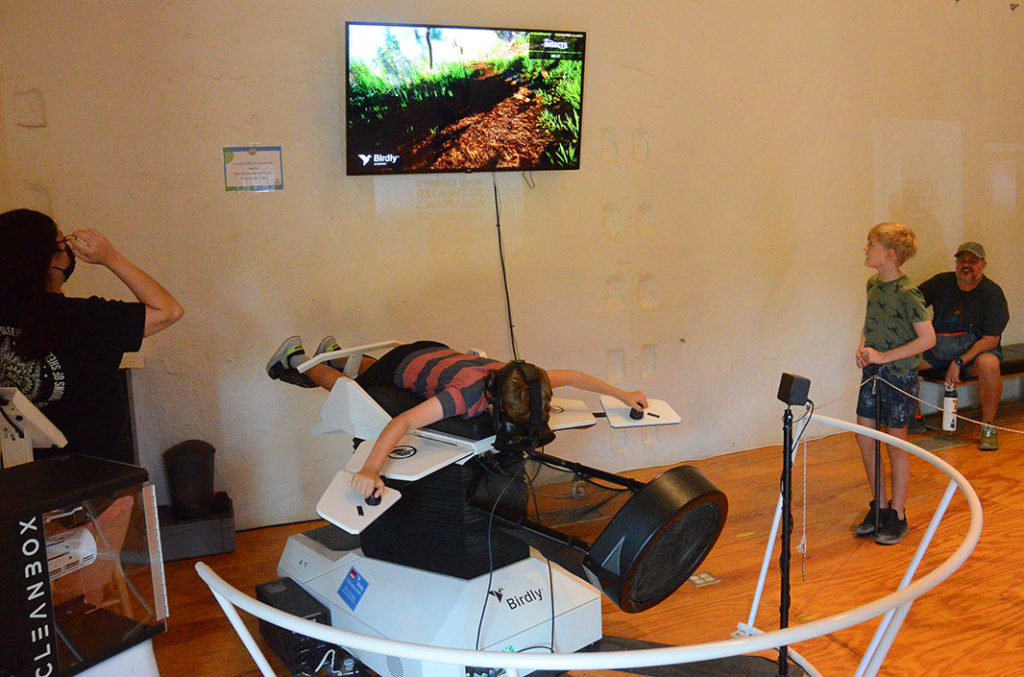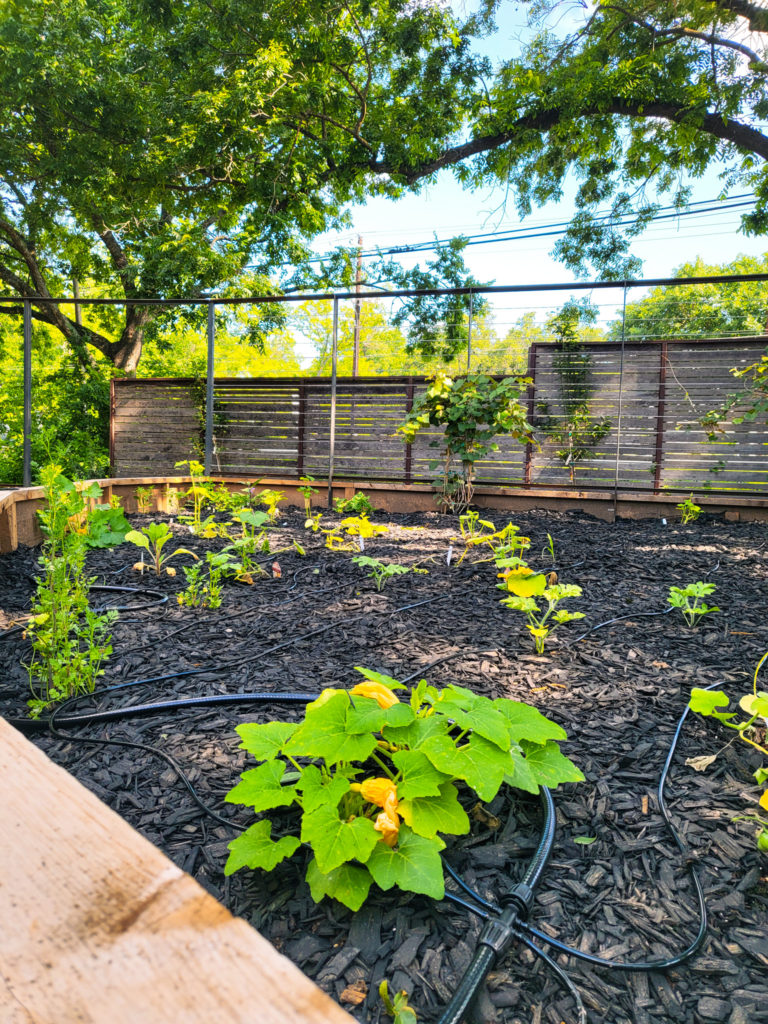Science Mill: A Date with Science
BY PHIL HOUSEAL, Contributing Writer
One Wednesday every month, “Pearl” and I have a date where we program robots, design circuits, study bugs, and build structures. Pearl is my 8-year-old granddaughter, and our One dates are to the Science Mill in Johnson City for Home School Days.
Pearl’s fascination began when she was 5, and I took her to experience some of the 50 interactive exhibits inside and outside the Mill. We strolled through the Aquaponics Greenhouse, where plants grew suspended in the air and koi swirled in recycled pools; she piloted a remote-controlled submarine, seeking undersea reefs; she built 3-D sand castles; we whispered secret messages 100 yards apart using parabolic dishes; and she actually ate fried crickets (“They tasted crispy!”).

I knew she was hooked when on our drive home she said, “I want to go back.”
Every one of the third of a million visitors want to go back to this special place, where families can spend the day “surrounded by science” as they virtually fly over a forest, control a ball with their mind, or manipulate a 30-foot colossal hand. Even the garden uses a “robo-hoer” that seeks out and eliminates weeds like an outdoor Roomba.
As a former elementary science teacher, my fascination with the Science Mill goes back to before they opened in 2015. I wrangled an interview with founder Bonnie Baskin, who with Robert Elde envisioned creating a space that ignited curiosity and started students on the path to careers in STEM– Science, Technology, Engineering, and Math.
Baskin had founded two successful biotech firms, and Elde was Dean of the University of Minnesota’s College of Biological Sciences. But the Science Mill was also “all about having fun.”
“The challenge with science is that we cannot fall in love with it by reading about it in a book,” Baskin said at the time. “That’s really what a science museum can do. The threshold is low, so all kids feel they can do it. But the ceiling is high: kids can take it to the extent of their interest, desire, and capability.”
It’s also a challenge to describe a visit to the Science Mill, which holds equal diversion for toddlers, teens, and teachers. It’s like describing an axolotl–an externally-gilled paedomorphic amphibious salamander that spends its adult life in water–which they happen to have on display. It’s part museum, part learning lab, part science class, and a lot of recess.
The converted 1880s grist mill and cotton gin houses more than 50 exhibits that “combine creativity and hands-on learning through art, kinetic technology, augmented and virtual reality, computer gaming and 4D experiences.”
Trained “Explainers” answer questions and help demonstrate the exhibits. And what exhibits they are:
Virtual Human Body–a 6-foot touch screen table with actual CT scans coming into it, so kids can explore the human body by virtually peeling away layers from the skin to the muscles to the bones
A 3-dimensional sandbox where kids can design their own topographical surfaces
A silo lined with LEDs that light up in response to ambient cell phone use
The 30-foot-tall Colossal Robotic Hand manipulated by remote control
Young scientists also can explore Masters of Disguise, Fossil Dig, Fractalarium, and Mindball, controlling the movement of a ball using brainwaves.
The team is always adding something new to experience. In 2019, they opened the 1,000-square-foot Aquaponics Greenhouse. In SciDive 4D, visitors put on a VR headset and use their arms to control a full-body motion table to simulate flying over terrain.

In August they opened the new Food Forest exhibit, installed with financial support from HEB’s Our Texas, Our Future Initiative, and the Favrot Fund. It is designed to foster appreciation of nature and the environment, by creating a living space that features raised beds planted with a variety of native fruits and vegetables, an herb spiral, and fig and pear trees.

Anahi Villarruel, Project Manager with Environmental Affairs at H-E-B, noted how this exhibit fits the Texas grocery chain’s vision.
“We are excited to be able to support the Science Mill and make sure that customers know exactly where their food is coming from,” Villarruel said. “We depend on amazing agricultural products and farmers here in Texas. We also want to show what sustainability looks like. This exhibit is about education and nature, and the Science Mill encapsulates both.”
The Food Forest is a good fit with the Mill’s mission of providing STEM-based experiences for all students regardless of economic status, location, gender or race, according to Peter Claffey, CEO.
“This exhibit is a little bit different in execution, but it is right on the nose with what we try to do each and every day here at the Mill,” Claffey said. “We start a lot of our seeds as an exhibit, and then they go into the aquaponic greenhouse. Now we have this opportunity to move all those plants after they’ve grown and matured from the greenhouse and then come out here. It creates a nice living ecosystem of plants and pollinators.”
The Science Museum is expanding its outreach, bringing exhibits to schools and offering off-site camps. Labs-on-the-Go are self-contained 60-minute programs with all materials, consumables, equipment, and instructions for a teacher to deliver a challenging, engaging hands-on STEM activity. They are designed for grades K-8 in fields of Physics, Environmental Science, and Life Science.
Last year the Science Mill partnered with the Johnson City High School as mentors for the school’s FIRST Robotics Team. In their initial year, the team advanced to the Texas state finals, and was able to attend the national competition held in Houston.
Home-schoolers like “Pearl” can take advantage of the resources at Home-School Days, with monthly age-based learning labs and activities, starting up in October through May.
During the Home School or any excursion, it’s easy to spend the day. The Lady Bird Lane Cafe serves up farm-to-table organic and all-natural meals you can enjoy on the patio. Every visit ends with a trip through the Science Store, where you will find the Hill Country’s largest selection of science-based toys, games, and books.
No matter who you go with, a trip to the Science Mill is truly a date with science.
—————————————————————————————————–
The Science Mill is located in downtown Johnson City; 101 S. Lady Bird lane.Fall Hours: Wednesday–Sunday 10am–4pm; Admission:0-2 years old–Free; Ages 3-17–$9.50; Adult (Ages 18-64)–$11.00; Seniors (Ages 65+)–$9.00; Military Discounts; Tickets available online at www.sciencemill.org. photos by Phil Houseal.
